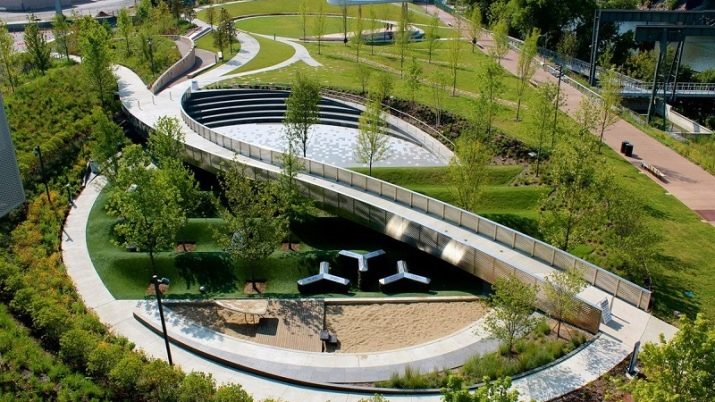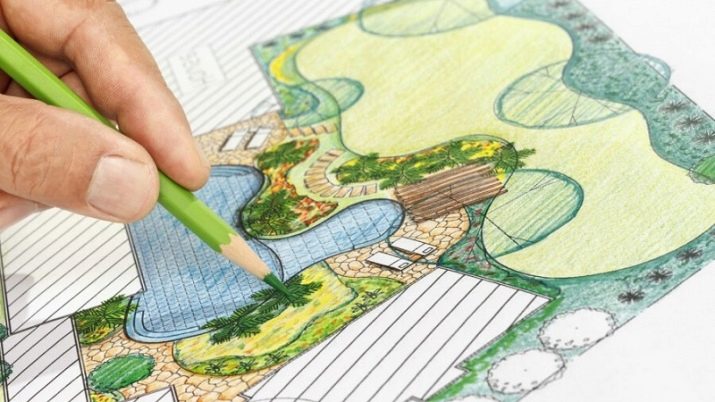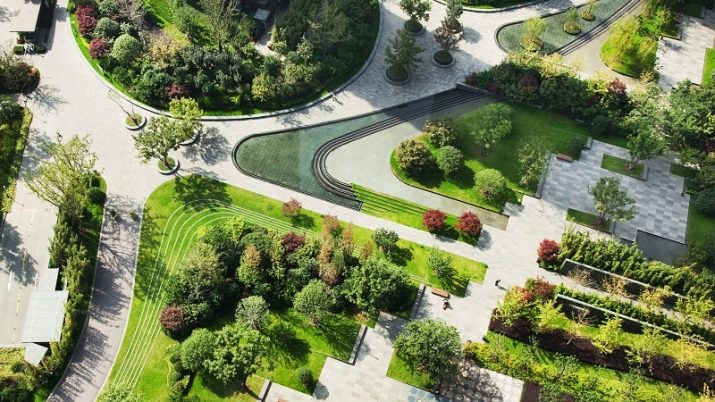Landscape architect: description of the profession, training and necessary skills

A landscape architect is a specialist who organizes and equips open free space, on the territory of which construction objects and green spaces are located or are planned to be placed. This type of activity requires developed creative and analytical abilities from a person. What are the features of such work, what a landscape architect should know and be able to do, how much the representatives of this profession earn - we will talk about this in our article.

Features of the profession
Landscape architecture is both an exact science and an art. When working on the volumetric-spatial arrangement of the territory, the specialist must not only proceed from the current features of the area (relief, shape and area of the site, existing plantings and objects), but also have a clear idea of the ways and possibilities of its transformation.
The main task of a landscape architect is to organize an attractive (from an aesthetic point of view), safe and comfortable environment that combines natural and artificially created objects. For this, a specialist:
- carefully examines the territory and its features;
- develops a plan for the arrangement of the territory;
- marks functional zones on the plan, locations of existing objects (plantings) and places where new objects (plantations) are supposed to be located;
- develops schemes for placing communications on the site.
The specialist introduces all possible transformations of the landscape into the plan, based on the characteristics of the territory: its relief, slope, type and density of soil, water table and other characteristics.
The end result of his work is a well-designed and organized space in which natural, construction, engineering and architectural components are organically combined with each other.

A landscape architect is a specialist in demand in such industries as:
- urban planning, urban gardening and landscaping;
- landscaping and landscaping of private homestead territories;
- restoration of architectural objects;
- optimization of the urban environment;
- nature conservation and nature management;
- scientific and teaching activities;
- consulting services in the field of architecture.
The described field of activity is closely related to a number of disciplines in which a landscape architect must be professionally versed. Such disciplines, in particular, include biology, plant growing, industrial design, ecology, architecture. Among the advantages of this profession, experts themselves note multitasking, unpredictability, and originality. It requires from a person not only original creative, but also rationalizing, logically grounded decisions. At the same time, it provides unlimited scope for self-expression and self-realization.
Landscape architecture is a field of activity associated with impressive intellectual workload, stress and a high level of responsibility. To achieve success in this area, a specialist must have not only impeccable professional knowledge and skills, but also such personal qualities as stress resistance, self-organization, and the ability to think outside the box.

How is it different from a landscape designer?
Despite the fact that the areas of activity of a landscape architect and a landscape designer are closely related to each other, the tasks facing these specialists are fundamentally different. A landscape architect makes more global and large-scale decisions related not only to the decoration of the space, but also to its technical arrangement and equipment. This profession involves a wider range of responsibilities and a higher degree of responsibility.
A landscape designer, in most cases, performs work related only to landscaping and landscaping. Its main task is to create an aesthetically attractive and comfortable space that combines buildings, green spaces, small architectural forms, large and small decorative elements.
In addition, unlike a landscape architect, a designer uses a less extensive list of tools, techniques and methods for decorating the territory in his work.

Responsibilities
The scope and list of responsibilities that a landscape architect must perform are determined in each case by the company's management. The range of main tasks facing a specialist in this profile usually includes:
- pre-design work (collection and analysis of information necessary for project development, landscape analysis of the territory, preparation of design and reporting documentation);
- development of landscape planning solutions for certain parts of the project in accordance with the terms of reference;
- making economic calculations justifying the rationality of the proposed design solutions;
- development and approval of design solutions with senior management;
- control over the implementation of the adopted and approved design solutions.
In addition, the official professional standard provides participation of a landscape architect in survey work and pre-design studies. At this stage, the specialist is engaged in a comprehensive study of the natural conditions at the site (object) entrusted to him.
In the future, the landscape architect uses the results of this work to carry out technical and economic calculations, develop drawings and layouts of engineering communications.

Requirements
The high level of responsibility associated with the work of a landscape architect requires from a specialist not only impeccable professional knowledge, but also certain personal qualities. The list of mandatory knowledge and skills that a representative of the described profession must possess is usually related to the following:
- knowledge of the basics of designing landscape objects;
- knowledge of the basics of engineering and construction preparation of the site;
- knowledge of natural (biological) aspects of landscape architecture;
- mastery of drawing technique;
- possession of specialized computer programs and graphic editors.
In addition, a landscape architect must be well versed in specific disciplines such as geology, geohydrology, soil science, dendrology, materials science. Without fail, a specialist of such a profile must be familiar with the basics of construction, the basics of organization, arrangement and placement of underground and aboveground utilities.
Considering that this field of activity is inextricably linked with impressive intellectual workloads, a high level of responsibility and a large number of diverse tasks, special importance is attached to such personal qualities of a specialist as:
- self-discipline;
- sociability;
- artistic taste;
- developed spatial thinking;
- self-criticism;
- teamwork skills.
Another important quality that a landscape architect should have is experts consider customer focus. This presupposes the ability to find a common language with the customer, to understand the essence of his requirements and wishes.

Education
You can get the profession of a landscape architect on the basis of secondary education (9 or 11 grades). In Russia, there are more than 100 educational institutions offering training in this specialty. These include such well-known universities as RUDN (Moscow), Leningrad State University im. Pushkin (St. Petersburg), GUZ (Moscow).
Applicants with secondary education, upon admission to a university or professional college, will need to pass exams in the following subjects:
- Russian language;
- maths;
- geography (physics or biology).
Considering that the profession of landscape architect is closer to the exact sciences, and not to art, when applying for applicants usually no need to take creative exams... The duration of study at a college is 2.5-3.5 years, at a university - 4-5 years. The offered forms of study in most colleges and universities are full-time and evening.
Persons with secondary specialized or higher non-core education, as well as persons receiving higher non-core education in some educational institutions professional retraining courses are offered under the Landscape Architecture program. Retraining courses are carried out on a paid basis. To register for training, the student does not need to pass exams in any subjects. At the end of the retraining courses, students are issued a certificate or a state-recognized diploma.
It is noteworthy that a number of universities provide for the opportunity to study remotely, without interrupting work or basic education.

The salary
The profession of a landscape architect is not only very popular, but also well paid. So, the average salary of a specialist in this profile in Moscow varies within 50-75 thousand rubles, in St. Petersburg - within 35-45 thousand rubles. The average salary of a landscape architect in the regions of the Russian Federation is 20-30 thousand rubles.
The highest wages are paid to representatives of the described field of activity in the USA, Australia and Canada.The average salary of a landscape architect in these countries is about $ 70-110 thousand per year.
Prospects and career growth
Career growth of a specialist in the field of landscape architecture, depends not only on his professional, but also on personal qualities. Diligence, a sense of responsibility, talent and personal ambition, multiplied by impeccable professional knowledge and skills, can open up a lot of opportunities for a specialist in this profile to move up the career ladder.
So, starting from the humble position of an intern in a design bureau or design studio and having gained the necessary experience, a specialist can eventually take the place of the chief landscape architect... In large companies, an assistant landscape architect (junior specialist), tirelessly demonstrating impeccable results of work, is able to get the post of head or deputy head of the project department in a few years.
Many successful landscape architects have moved on to the self-employed business over time. Working in this direction, you can open your own design studio, a small architectural and design bureau or a consulting agency. Besides, a landscape architect can pursue a career in science and teaching.
It is currently possible to get a job as a researcher or teacher of this discipline both in a commercial and in a state educational institution.







